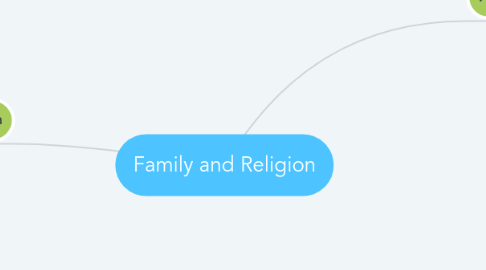
1. Family
1.1. a social institution found in all societies that unites people in cooperative groups to care for one another, including any children
1.2. Diversity of Family life
1.2.1. Race
1.2.2. Color
1.2.3. Social Class
1.2.3.1. Rich
1.2.3.2. Poor
1.2.4. Gender
1.2.4.1. Marriage and gender
1.2.4.2. Who is more dominant?
1.2.4.2.1. Husband or wife
1.2.5. Ethnicity
1.3. Issues in family life
1.3.1. Divorce
1.3.1.1. Nearly half of todays marriages end in divorce
1.3.2. Violence/abuse
1.3.3. Miscommunication between families due to both parents working full time
1.3.4. An issue in my family life is who has to clean the dishes tonight!!!!
1.3.4.1. Not me!
1.4. Structural-functional theory
1.4.1. shows how families help society operate smoothly: socialization of the young, regulation of sexual activity, social placement, and providing material and emotional support
1.5. Built on kinship
1.5.1. marriage
1.5.2. ancestors
1.5.3. adoption
1.6. Alternative family forms
1.6.1. Same sex marriage
1.6.2. Single Parenting
1.6.3. Cohabition
1.6.3.1. the sharing of a household by an unmarried couple
2. Religion
2.1. a social institution involving beliefs and practices based on recognizing the sacre
2.2. Structural-functional theory
2.2.1. suggests that religion unites people, promotes social cohesion, and gives meaning and purpose to life (Emile Durkheim)
2.3. Different religious organizations
2.3.1. Churches
2.3.1.1. Religious organizations integrated into society
2.3.2. Cults
2.3.2.1. religious organizations based on new and un-conventional beliefs and pract
2.3.3. Sects
2.3.3.1. charismatic leadership and suspicion of a larger society
2.3.4. some people rather stay home and sleep
2.4. History
2.4.1. religion has changed over the years in organizations and christian principles.
2.5. Religious trends
2.5.1. 58% of women and 49% of men say that they are a “religious person
2.5.2. 56% of adults profess a firm belief in Go
2.5.3. 58% of adults say they pray at least once a day
2.5.4. 31% of adults say they attend religious services weekly or almost week
2.5.5. 27% of men and 19% of women claim no religion • In the United States, while some indicators of religiosity (like membership in mainstream churches) have declined, others (such as membership in sects) have increased.
2.5.6. fundamentalism
2.5.6.1. opposes religious accommodation to the world, interprets religious texts literally, and rejects religious diversity
